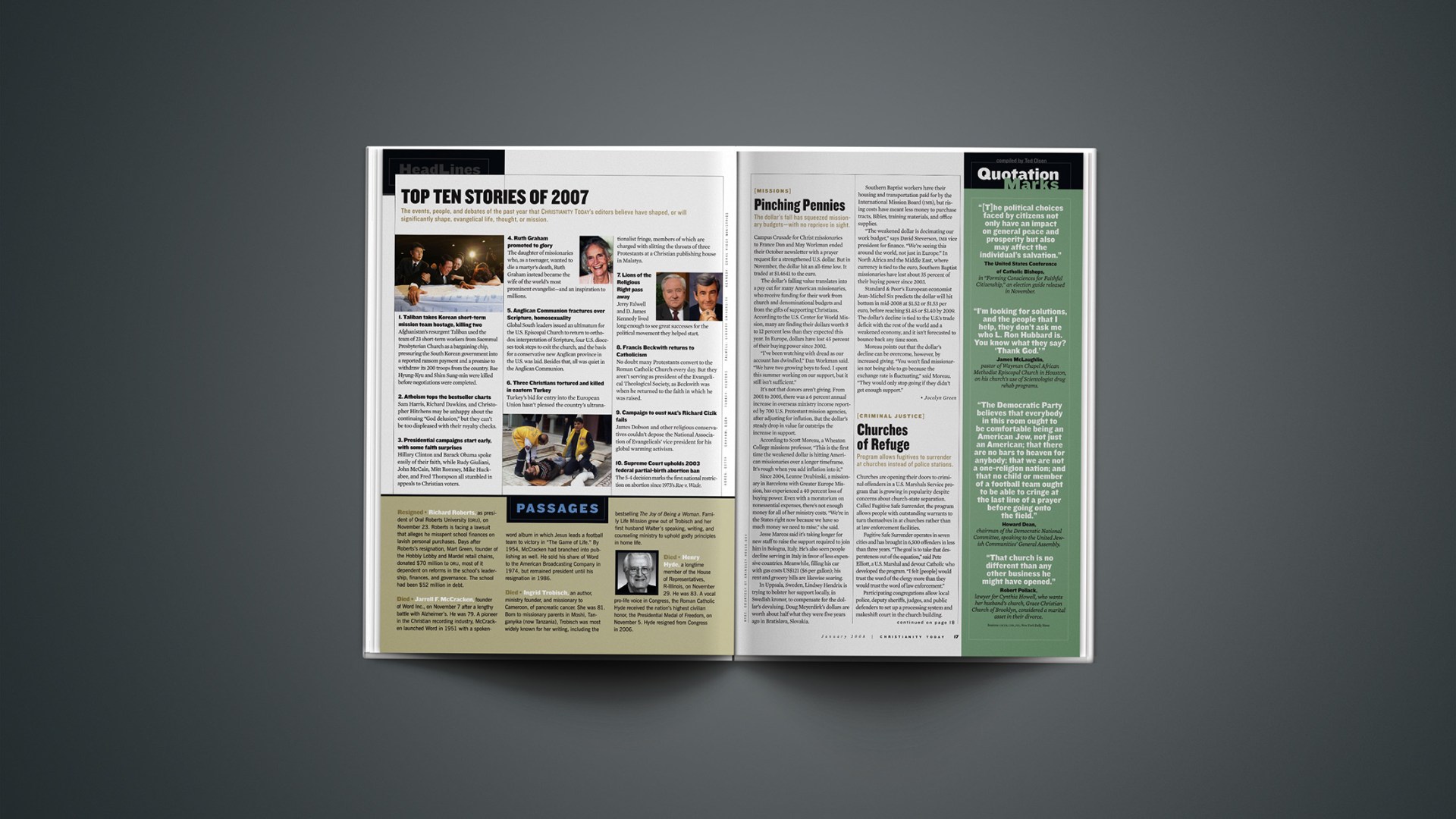Campus Crusade for Christ missionaries to France Dan and May Workman ended their October newsletter with a prayer request for a strengthened U.S. dollar. But in November, the dollar hit an all-time low. It traded at $1.4641 to the euro.
The dollar’s falling value translates into a pay cut for many American missionaries, who receive funding for their work from church and denominational budgets and from the gifts of supporting Christians. According to the U.S. Center for World Mission, many are finding their dollars worth 8 to 12 percent less than they expected this year. In Europe, dollars have lost 45 percent of their buying power since 2002.
“I’ve been watching with dread as our account has dwindled,” Dan Workman said. “We have two growing boys to feed. I spent this summer working on our support, but it still isn’t sufficient.”
It’s not that donors aren’t giving. From 2001 to 2005, there was a 6 percent annual increase in overseas ministry income reported by 700 U.S. Protestant mission agencies, after adjusting for inflation. But the dollar’s steady drop in value far outstrips the increase in support.
According to Scott Moreau, a Wheaton College missions professor, “This is the first time the weakened dollar is hitting American missionaries over a longer timeframe. It’s rough when you add inflation into it.”
Since 2004, Leanne Dzubinski, a missionary in Barcelona with Greater Europe Mission, has experienced a 40 percent loss of buying power. Even with a moratorium on nonessential expenses, there’s not enough money for all of her ministry costs. “We’re in the States right now because we have so much money we need to raise,” she said.
Jesse Marcos said it’s taking longer for new staff to raise the support required to join him in Bologna, Italy. He’s also seen people decline serving in Italy in favor of less expensive countries. Meanwhile, filling his car with gas costs US$121 ($6 per gallon); his rent and grocery bills are likewise soaring.
In Uppsala, Sweden, Lindsey Hendrix is trying to bolster her support locally, in Swedish kronor, to compensate for the dollar’s devaluing. Doug Meyerdirk’s dollars are worth about half what they were five years ago in Bratislava, Slovakia.
Southern Baptist workers have their housing and transportation paid for by the International Mission Board (IMB), but rising costs have meant less money to purchase tracts, Bibles, training materials, and office supplies.
“The weakened dollar is decimating our work budget,” says David Steverson, IMB vice president for finance. “We’re seeing this around the world, not just in Europe.” In North Africa and the Middle East, where currency is tied to the euro, Southern Baptist missionaries have lost about 35 percent of their buying power since 2003.
Standard & Poor’s European economist Jean-Michel Six predicts the dollar will hit bottom in mid-2008 at $1.52 or $1.53 per euro, before reaching $1.45 or $1.40 by 2009. The dollar’s decline is tied to the U.S.’s trade deficit with the rest of the world and a weakened economy, and it isn’t forecasted to bounce back any time soon.
Moreau points out that the dollar’s decline can be overcome, however, by increased giving. “You won’t find missionaries not being able to go because the exchange rate is fluctuating,” said Moreau. “They would only stop going if they didn’t get enough support.”
Copyright © 2008 Christianity Today. Click for reprint information.
Related Elsewhere:
Baptist Press reported on how Southern Baptist missionaries are responding to the falling dollar.
Other articles on money and missions are available on our site.










